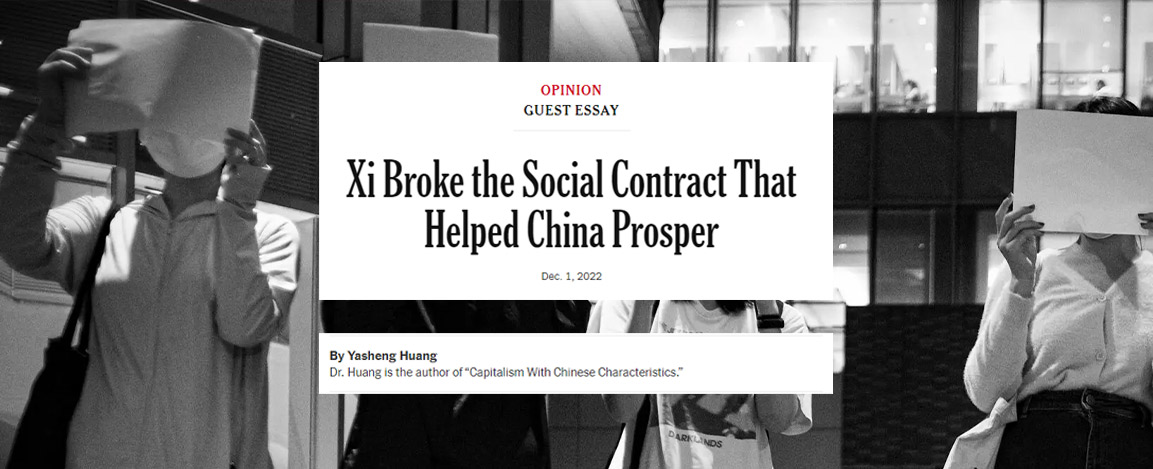Yasheng Huang, MIT Sloan Professor and MIT-China Faculty Director, provides analysis on the recent protests in China. This essay was originally published here in The New York Times. An excerpt is featured below.
The protests in China against the government’s draconian Covid controls have been compared to those in 1989, when students demonstrated for political reforms and democracy. The 1989 pro-democracy movement occurred in the most liberal, tolerant and enlightening period in the history of the People’s Republic of China, and the regime opened fire in Tiananmen Square — after the ouster of the liberal leader, Zhao Ziyang — because it had run out of every other control tool in its possession. This is called the Tocqueville paradox: An autocracy is most vulnerable when it is least autocratic.
But a closer analogy is April 5, 1976. On that day and the days before, protesters gathered in Tiananmen Square, demonstrating against the tyrannical rule, deteriorating economic conditions and political persecutions by the Gang of Four and, by implication, its patron, Mao Zedong. That was a movement born out of grievances, not aspirations.
The Covid protests are occurring at the height of China’s autocratic moment. While there are calls for free speech and elections, the rallying cry since Sunday has been against a jarring oppression: the incarceration of hundreds of millions of people in their homes and in field hospitals. Autocracies — whether in China or elsewhere — are oppressive, but has another autocratic regime ever taken away the rights of so many people to lead a normal life?
Read the full article here.
Yasheng Huang is a professor of global economics and management at the MIT Sloan School of Management and the author of the forthcoming book “The Rise and the Fall of the EAST: Examination, Autocracy, Stability, and Technology in Chinese History and Today.”




